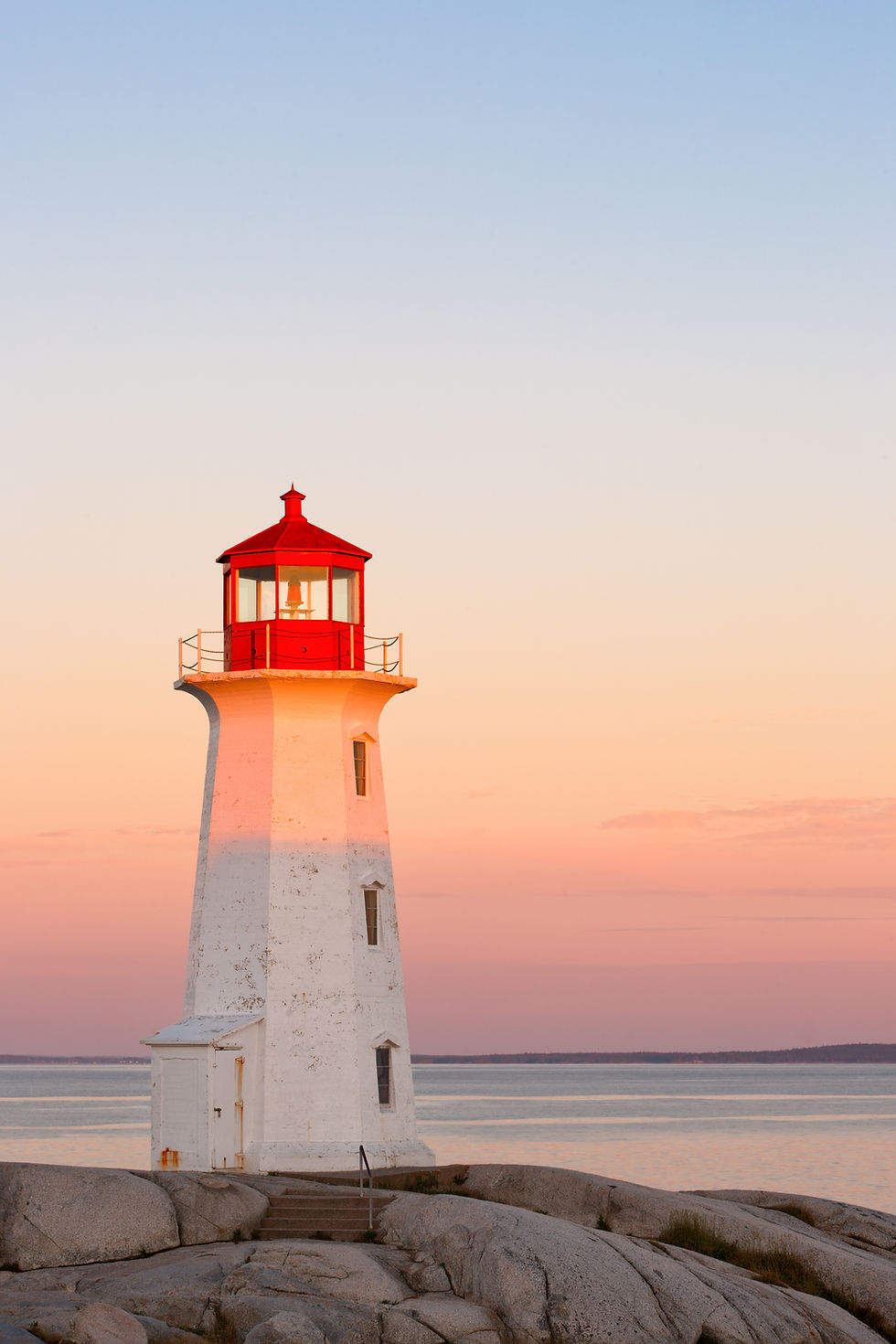The Burntcoat Light
- Angela Sanford
- Mar 4
- 4 min read
by Hattie Dyck
FROM: ALICE EDDY, TRURO AND INFORMATION FROM GOOGLE. (2015)

With the days of the lighthouse fast disappearing there are very few people who can claim they were born in one. Alice Eddy is one of those few as she was born at home in the Burntcoat lighthouse in 1939.
She has fond memories of that building where her father William Faulkner tended the light for 31 years. He received the Imperial Service Medal from the Canadian Government for his long and faithful service as lightkeeper there.
Located on the shore of the Bay of Fundy where its claim to fame is the highest tides in the world, it was an ever interesting place to be. Alice recalls their rural roots as pleasant and comfortable with the benefits of a huge vegetable garden, apple and cherry trees, berries to pick and game to hunt. Her mother was very artistic and filled the home with beautiful homemade quilts and mats. She also made use of the garden and fruit to pickle and preserve for the long, cold winter months. Even their blended family made an interesting mix. William was 25 years older than Alice’s mother Beulah. William became a widower, left with five children; Beulah was a widow who was left with two children, and when they married they had four children. All in all, there were eleven children that lived there.
The lighthouse was roomy with an open concept downstairs and bedrooms upstairs. Alice remembers seeing a ghost one night as she and her sister Lenora slept together. Her bedroom door which was usually closed was open for some reason she doesn’t
understand. She awakened with a start and sat up in the bed. As she did she saw the form of a tall, middle aged lady standing in the doorway. She was dressed totally in white, with a long coat, and a fleece cap. Alice was startled but not frightened and crawled down under the blankets to snuggle in beside her sister. When she looked up again the lady was gone. She believes it was her father’s first wife Catherine who, in 1927, died suddenly in that room.
The first lighthouse at what was known as Burntcoat Head was built in 1858 and was first lit in 1859. The light was a square, 50 foot high wooden tower that was attached to the end of the lighthouse. The five oil lamps were fuelled by kerosene which came to the shore by boat. Over time, the relentless tides eroded the shoreline and the lighthouse was sitting on an island.
In 1913 this lighthouse was replaced by a second one which stayed there until 1972 when the Canadian Coastguard came on a Sunday and burned it down without consultation with the citizens who lived there. This caused a lot of unhappiness in Burntcoat and the surrounding area because of its appeal to both locals and tourists. Consequently a replica was erected in 1994 and is now a worldwide tourist attraction.
Even the community name has been an attraction over the years. Some residents strongly believe Burntcoat is spelled with two tees in it. Others say it should be Burncoat. One story is that when the early settlers were clearing the land they were burning down trees. One night a man awoke to see another man’s coat being burned, and yelled burnt coat, thus the name Burntcoat. Another is that the community received its name when Thomas and Robert Faulkner were burning marsh in 1795. One of them hung his coat too close to the fire and it burned.
In the Guinness Book of Records (1975) it is declared that Burntcoat has the highest tides in the world with the average measuring 55.8 feet. During what was known as the Saxby Gale in 1869 they measured 70.9 feet. In the days of wooden ships in what is often called “”The Golden Age of Sail”” the lighthouse guided the ships up the Cobequid Bay. One ship named “”Only Son”” that belonged to mariner Captain William Scott of Minasville, and was being sailed by his sons was dashed to pieces by the rocks off Burntcoat. Thankfully the crew survived.
A German mail plane crashed off the coast there at 3:30 am. on October 6, 1931. Many local residents heard the roar of the plane as it crashed and the pilots screaming for help. The lighthouse keeper William Faulkner went to Noel wharf where there was a schooner but the tide wasn’t high enough to push it off. A search was undertaken but the bodies of the pilots were never found. The only remnant of the plane that was found was the gas tank. Alice remembers her father telling that story as it haunted him to hear the men crying for help and he was unable to get to them.
The last lighthouse keeper at Burntcoat was Ervin Faulkner, son of William. The first settlers at Burntcoat after the Acadians were three Faulkner brother, Thomas, Edward and Robert who immigrated from Scotland in1806.



Comments